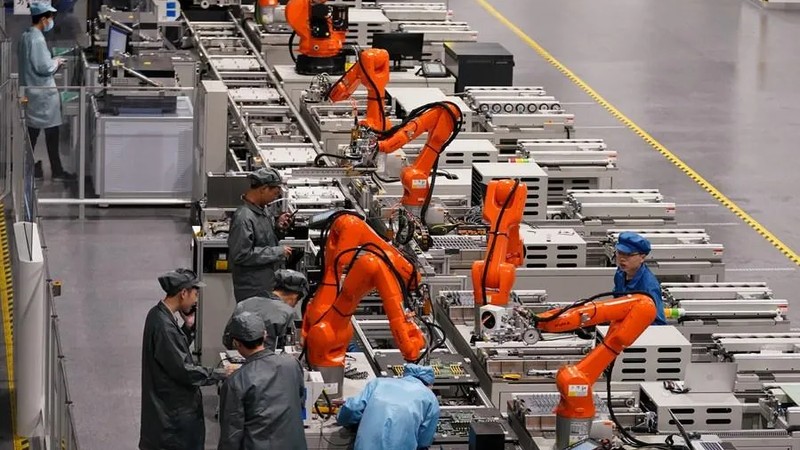Automation and artificial intelligence (AI) are fundamentally transforming the global manufacturing landscape. However, the pace and effectiveness of adoption vary significantly from country to country. Notably, China is setting the standard with its impressive robot density and AI-driven efficiency enhancements. As a result, it is experiencing substantial economic growth in its manufacturing sector. Conversely, the United Kingdom faces a pressing challenge. A recent analysis indicates that it risks forgoing a potential £150 billion boost to its GDP by 2035 due to skills shortages and inadequate support structures for small and medium-sized businesses (SMBs).
This variability in adoption levels prompts an urgent inquiry into how businesses, particularly SMBs, can implement automation and AI effectively. The experiences of countries like Russia and Brazil provide valuable lessons. Russia has employed a state-led approach to its Industry 4.0 strategy, focusing on significant investments and national initiatives. In contrast, Brazil has concentrated its efforts on providing resources geared toward the unique challenges faced by its SMB sector. Both approaches highlight a compelling truth: The integration of digital technologies must be accompanied by workforce training to achieve meaningful results.
For SMB leaders, implementing automation is not just about adopting new technologies; it’s about rethinking core workflows and operations to capitalize on AI’s capabilities. To navigate this transformative landscape, follow a structured approach to automate tasks in your organization using platforms such as Make or Zapier.
Start by identifying repetitive workflows that consume significant time and resources. Mapping these processes will help clarify which tasks could benefit most from automation. Engage your team in this exercise to gather insights on their daily tasks. Often, the employees on the front lines have the best perspective on where inefficiencies lie.
Once you’ve identified potential automation areas, prioritize them based on impact and ease of implementation. Begin with straightforward processes that can generate quick wins. For instance, consider automating data entry tasks by integrating spreadsheets or CRM systems with Zapier. Create a “Zap” that triggers an action whenever new data is entered in one application, automatically populating another. This step will alleviate staff from mundane data handling, allowing them to focus on strategic initiatives.
Next, explore ways to improve communication within your team and with your customers. For example, you can use automation tools to create a pipeline that sends notifications or follow-up emails when specific events occur, such as a customer’s service request. By optimizing customer interactions, you enhance satisfaction while freeing up your team’s time.
As you become more familiar with these tools, think about integrating AI-driven solutions that offer predictive analytics or help with decision-making. For example, you might deploy AI models that forecast inventory needs based on historical data and current trends. This proactive approach can significantly reduce waste and improve the efficiency of your supply chain.
While these steps present clear opportunities, it’s essential to consider the risks. Implementing automation without appropriate training can lead to employee resistance. Make sure your team is on board with these changes by providing training sessions that illustrate the benefits of automation. Foster a culture that embraces change by highlighting success stories within your organization.
Moreover, the return on investment (ROI) for automation largely depends on how effectively you analyze performance metrics post-implementation. Regularly review key performance indicators (KPIs) related to time savings, cost reductions, and quality improvements. This ongoing evaluation ensures that your automation strategies are delivering value and allows for continuous refinement.
It’s also crucial to remain vigilant about cybersecurity risks that accompany increased automation and AI integration. As you digitize processes, invest in robust cybersecurity measures. This investment not only protects your data but also builds trust with your customers, who will appreciate your commitment to safeguarding their information.
As you develop your automation strategy, remember that success does not happen overnight. Building a solid foundation takes time, and the ultimate goal should be to create a resilient organizational structure that can adapt to evolving market conditions. Establish a feedback loop where employees can share experiences and suggest improvements. This inclusive approach fosters innovation and keeps morale high as everyone works collaboratively toward common goals.
As you implement and refine automated processes, keep a close eye on industry trends. It is imperative to stay informed about new technologies and best practices that could further enhance your business operations. Engaging with industry forums, attending webinars, or participating in process improvement communities can provide insights that will keep your organization at the forefront of manufacturing innovation.
The case studies of countries that have successfully adopted AI and automation effectively illustrate that integrating these technologies is not merely about new tools but about crafting a comprehensive digital strategy. Whether it’s China’s robust investment in AI or Brazil’s focus on its local SMB ecosystem, the clear message is that the future will belong to nations and businesses that make deliberate choices to blend technology with human expertise.
In conclusion, as the global landscape of manufacturing continues to evolve, SMBs have an unprecedented opportunity to streamline operations and enhance competitive advantages through automation and AI. By understanding the unique requirements of your processes, leveraging tools like Make and Zapier, and committing to workforce training, you can position your organization for sustainable success.
FlowMind AI Insight: Embracing automation is not just a strategic move; it’s an investment in your team’s capabilities and your company’s future. The balance of technology and skill development will be the differentiating factor for resilient manufacturing in a rapidly changing world.
Original article: Read here
2025-08-27 13:47:00

